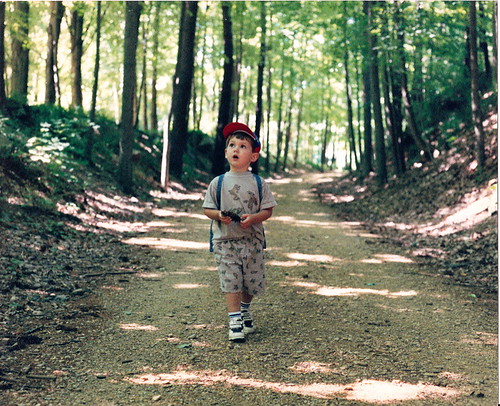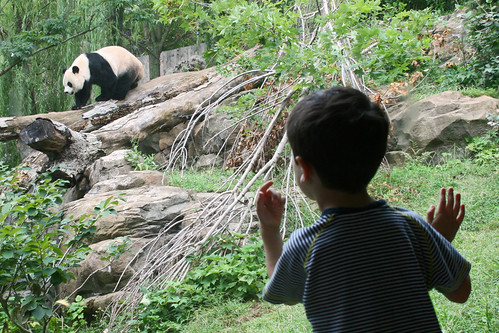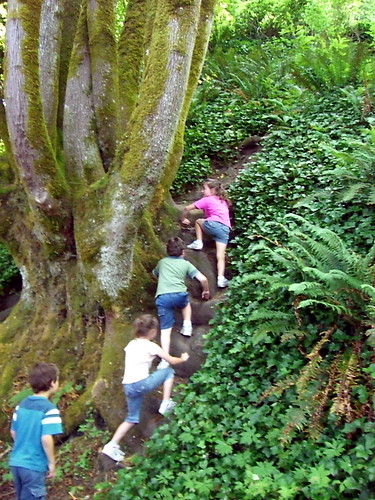 If we want kids to have an attachment to nature, for whatever reason -- it's good for them, it's good for the planet -- it's no longer going to just happen automatically. Here are 10 ways parents and other adults can help kids develop a passion for nature.
If we want kids to have an attachment to nature, for whatever reason -- it's good for them, it's good for the planet -- it's no longer going to just happen automatically. Here are 10 ways parents and other adults can help kids develop a passion for nature.- Structure unstructured time outdoors. Do you set aside time to make sure your kid can just be outside, free to play and explore? What would you have to do to make it happen? Being outdoors shouldn't be a special event that gets squeezed in when there's a gap in everything else. Make sure there's time.
- Show some enthusiasm. Rachel Carson once wrote, "If a child is to keep alive his inborn sense of wonder, he needs the companionship of at least one adult who can share it, rediscovering with him the joy, excitement, and mystery of the world we live in." If you model disinterest, there's a much slimmer chance that your child will find a long-term passion for the outdoors...maybe as part of a teenage rebellion, but it may be too late at that point.
- Detach from electronics. The whole family. Turn off the tv and the computer and get outside. And turn off your MP3 players, cell phones, and PDAs when you're out there. Engage.
- Don't make being outside like school. Let kids come up with their own theories about what things should be called, or how they work. Ask questions that get them to observe and look closely at things -- but don't quiz them too much.
- Find a natural spot close to your home. What's the closest patch of greenery in your yard or on your street? Explore it daily: What lives there? How does it change over time? Don't wait for a big trip to the mountains or even the park to get your kid to engage with nature.
- Share books that love nature and adventure. Think of all the classics that tell stories of kids outdoors: Huck Finn, Julie of the Wolves, Island of the Blue Dolphins...I'm sure you had your favorites as a child.
- Keep a nature journal with your child. Fill it with their drawings or impressions of what they saw outside. Use it as another way to encourage them to observe closely and create a relationship with the things they're seeing. (See our previous post for more ideas on keeping a nature journal.)
- Find a space for a fort, a treehouse, or a special hiding spot. Kids like to have a space to call their own, where they can hide from the outside world. If you don't have space where you live, encourage your kid to find a little hideout in a local park: a hollow tree, a space in the bushes.
- Get together with other families outdoors. You may find you all have a longer attention span for being outdoors if the adults socialize while the kids make up their own outdoor play together. And forming friendships with other people who enjoy being outdoors will help you find the time and inspiration to get out there.
- Start a collection. Looking for small items to take home creates one more way to engage with the outdoors, and it brings part of the outdoors into your child's room. Just be respectful of park rules and of other outdoor explorers who might also enjoy that thing you're taking home. We have a friend who collects "fairy" items with her daughter: acorn caps as hats, grape tendrils as magic wands. It seems unlikely that removing a few things on that scale would have a major impact, even if hundreds of children start doing it.


Like the photos in this post? Mouse over for credits; a click takes you to the photographer on Flickr.


